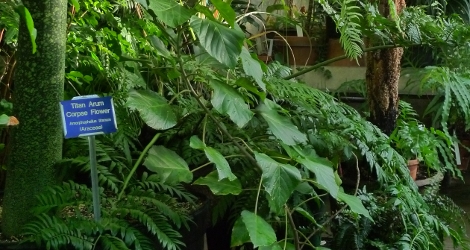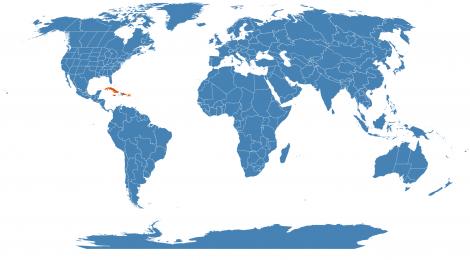Accession Data:
Zamia pumila L.
- Common Name: Florida Arrowroot, Sago Cycas
- Family: Zamiaceae Reichb.
- Description: [syn. Z. furfuraceae L.f.; Z. silvicola Small; Z. umbrosa Small]
Palm-like, dioecious, low-growing plant with trunk to 6 inches high or wholly underground; leaves 2-4 feet long, pinnae in 2-13 pairs, linear to lanceolate or oblong-ovate), and broadly tapering to each end; wider than oblanceolate.">obovate, margins toothed in the middle, often revolute, petioles prickly; male cones cylindrical, to 4 inches long, often clustered, female cones elongate-ovoid, to 5 inches long, the exterior faces of the ends of the scales hexagonal, horizontally elongated.
Florida, West Indies, Mexico
Additional Common Names: Coontie, Comptie, Seminole-Bread
- Uses: Folkloric Use
In folk medicine elsewhere, fruit used in therapeutic shampoos. Gum from the stem used for skin ulcers. Roots chewed for cough and believed to improve the singing voice. Dried powder placed inside socks and shoes to prevent athlete's foot by decrease moisture.
Other Uses
• Washed roots contain 38% starch and 6% protein, used to make sofkee, a staple of the traditional Seminole Indian diet and a component in the diet of many indigenous peoples. • Extracted starch from root is marketed as "arrowroot" as ingredients to biscuits baby food, chocolate, spaghetti. Also used in cooking as a thickener.
From Philippine Alternative Medicine
Accession Data:
- Accession # 198500599
- Source: Unknown
- Accession Date: 12-31-1985
- Bench: 1305 - NEOA: Ground Bed 1 NW
- Currently: active - healthy
- Qty: 1 confirmed on 10-08-2024
- Restrictions:
- Poisonous Plant Parts - Not for Human Consumption
- CITES Appendix II Listed Plant
- Poisonous Plant Parts - Not for Human Consumption
Classification:
- Division: Cycadophyta
- Class: Cycadopsida
- SubClass: Cycadidae
- Order: Cycadales
- SubOrder:
- Family: Zamiaceae
- SubFamily: Zamioideae
- Tribe: Zamieae
- SubTribe: Zamiinae
Flowering Data:
This accession has been observed in bloom on:| Year | Jan | Feb | Mar | Apr | May | Jun | Jul | Aug | Sep | Oct | Nov | Dec | ||||||||||||||||||||||||||||||||||||||||
|---|---|---|---|---|---|---|---|---|---|---|---|---|---|---|---|---|---|---|---|---|---|---|---|---|---|---|---|---|---|---|---|---|---|---|---|---|---|---|---|---|---|---|---|---|---|---|---|---|---|---|---|---|
| 2024 | ||||||||||||||||||||||||||||||||||||||||||||||||||||
References (internal):
- EEB Greenhouse Holdings native to: Cuba / Dominican Republic / Jamaica / Puerto Rico
References (external):
- The Plant List (2013). Version 1.1. Accessed 26 February 2015.
- WCSP (2015). World Checklist of Selected Plant Families. Facilitated by the Royal Botanic Gardens, Kew. Accessed 26 February 2015.
- Hortus Third, LH Bailey Hortorium, 1976
data regenerated on Tue, 08 Oct 2024 12:54:15 -0400 [bcm v4.0]
Images:

Additional images for this accession:
Click on thumbnails to enlargeCurrent Accessions in the Zamiaceae
Subfamily Ceratozamieae
Subfamily Encephalartoideae
Tribe Diooeae
Subfamily Encephalartoideae
Tribe Encephalarteae
- Encephalartinae: Encephalartos altensteinii


- Encephalartinae: Encephalartos nubimontanus


- Macrozamiinae: Lepidozamia peroffskyana

Subfamily Zamioideae
Tribe Zamieae
- Microcycadinae: Microcycas calocoma


- Zamiinae: Zamia furfuracea


- Zamiinae: Zamia pumila

 = indicates flowering in past 14 days
= indicates flowering in past 14 days
 = images available for this accession
= images available for this accession
 = map available for this accession
= map available for this accession
 = accession added within past 90 days
= accession added within past 90 days
